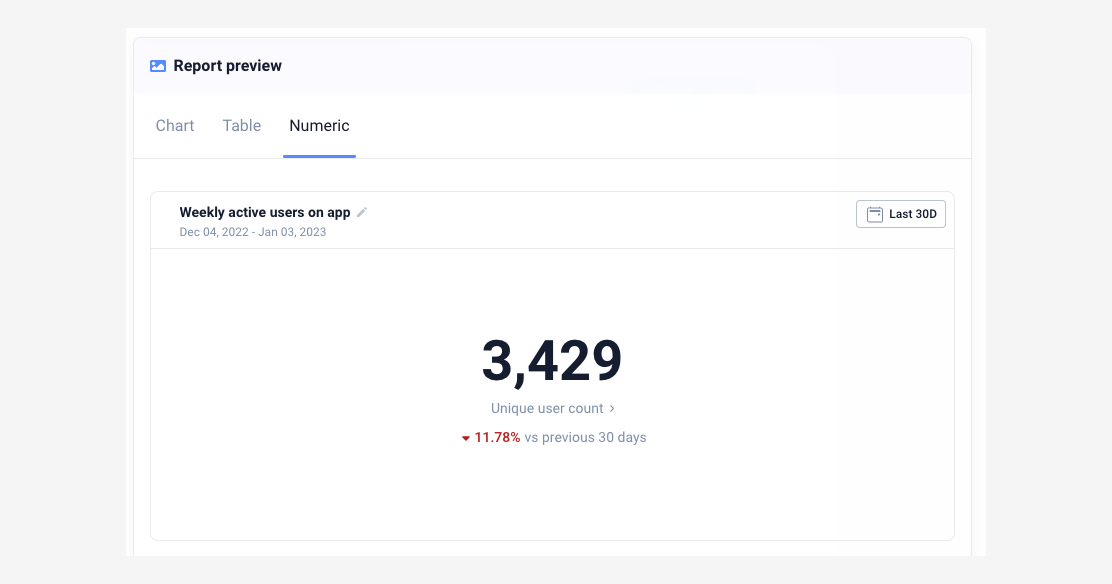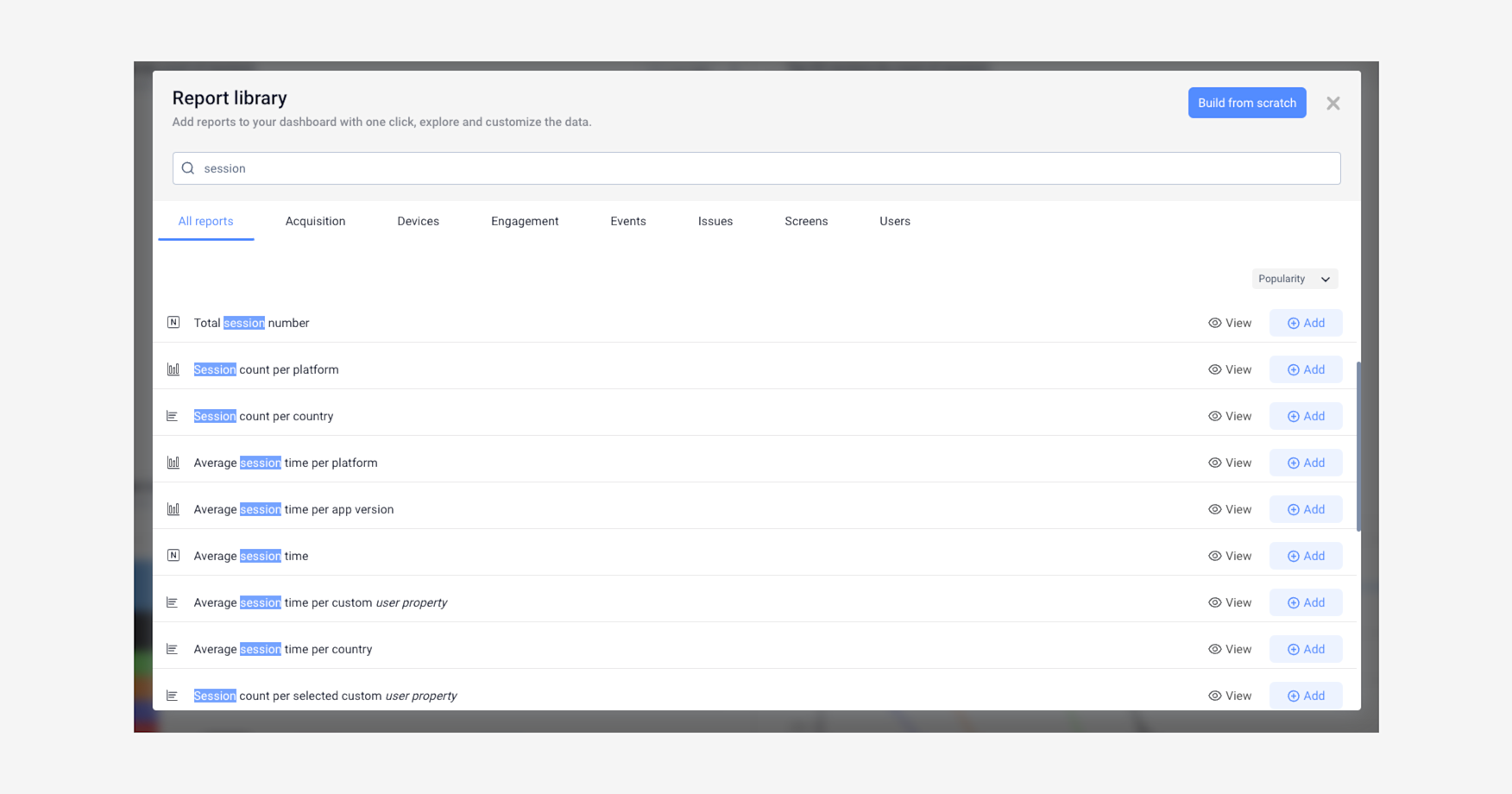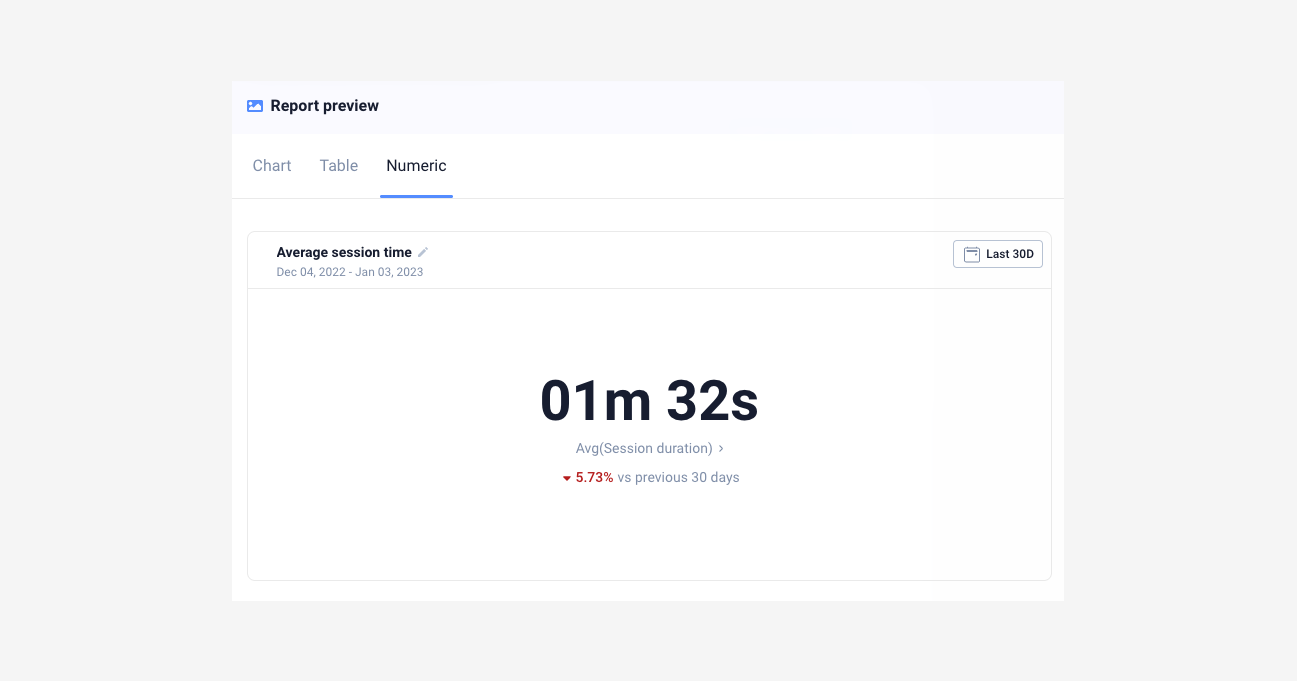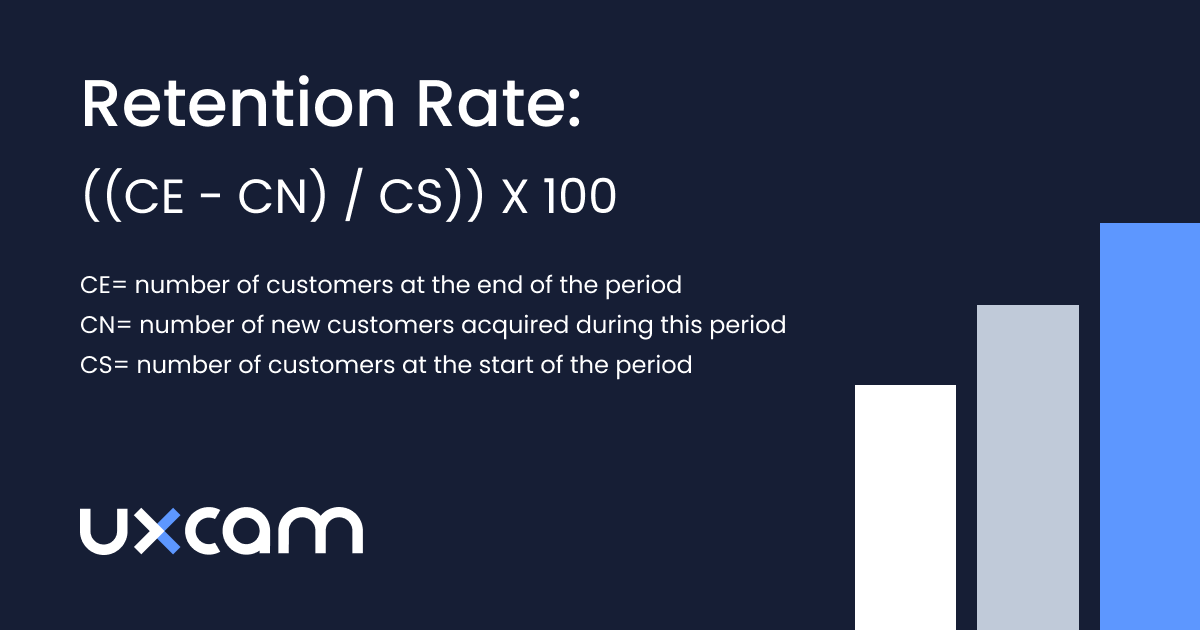Back to blog
8 MIN READ
The most important mobile app analytics metrics to measure
PUBLISHED
17 June, 2024

Product Analytics Expert

Mobile app analytics is the process of collecting, measuring, and analyzing data from a mobile app in order to understand and improve its usage and performance.
By tracking specific metrics, businesses and app developers can gain valuable insights into how their app is being used, identify areas for improvement, and make informed decisions about its development and marketing strategies.
The most important mobile app analytics metrics to measure are those that provide insight into user behavior, engagement, and overall app success.
By regularly tracking and analyzing these metrics with the right mobile analytics tools, businesses can better understand their target audience, optimize their app for user satisfaction and retention, and ultimately drive more revenue and growth. In this article, we will explore the most important mobile app analytics metrics to measure and how they can help drive success for your mobile app.
Active Users


Active users are defined as the number of unique users who engage with an app within a specific time period, typically within the last 30 days. Tracking active users is important because it provides insight into the reach and popularity of an app, as well as the level of engagement and loyalty among its user base.
Importance of tracking active users
Tracking active users is a key metric for mobile app success because it gives a sense of the app's overall reach and popularity.
A high number of active users indicates that the app is resonating with its target audience and is likely to continue growing in popularity. On the other hand, a low number of active users may indicate that the app is not meeting the needs or interests of its users, or that it is not being effectively marketed or promoted.
How to increase your active user count
There are several strategies that businesses and app developers can use to increase the number of active users for their mobile app. These include:
Use habit-forming techniques: The best apps ensure that users log in regularly by developing a habit around their app. Read this article on how to do that.
Improve the ease-of-use of your app: By ensuring that the app is easy to navigate and use, businesses can encourage more users to continue using the app on a regular basis.
Offer valuable and engaging content through push notifications: Providing high-quality, relevant content can help keep users coming back to the app.
Encourage word-of-mouth marketing: Encouraging satisfied users to share the app with their friends and social networks can help increase its reach and user base.
Offer incentives and rewards: Offering incentives and rewards for using the app, such as discounts or special features, can encourage more users to engage with the app on a regular basis.
Use Session Replay: This will help to identify any issues or pain points that may be causing users to leave the app, and make changes to improve the user experience and encourage more users to stay. UXCam offers session replay.
How to track active users
Mobile apps can use platforms such as UXCam to track and analyze active users. UXCam is a user experience and product analytics solution that provides detailed insights into app usage, including active user counts and engagement data. By using UXCam, businesses can get a better understanding of how their app is being used and identify opportunities for improvement to increase the number of active users.
Session Length
Session length refers to the amount of time that a user spends actively using an app during a single session. Tracking session length is important because it provides insight into how engaged and interested users are in the app, and can help identify areas for improvement to keep users coming back for longer periods of time.
Importance of tracking session length
Tracking session length is a key metric for mobile app success because it gives an indication of how well the app is retaining its users.
A long session length typically indicates that users are finding the app engaging and useful, while a short session length may indicate that users are quickly losing interest or experiencing problems with the app. By tracking session length, businesses and app developers can identify areas of the app that may be causing users to leave and make changes to improve retention.
Factors that can affect session length
There are several factors that can affect session length, including the app's functionality and usability, the quality and relevance of the content, and the overall user experience. Other factors that can impact session length include the device being used (e.g., phone vs. tablet), the user's location and network connectivity, and the time of day the app is being used.
How to track Session Length with UXCam
UXCam's Dashboard feature provides a range of metrics and analytics related to session length, including average session length, session count, and user retention, which can help businesses and app developers track and analyze trends over time. Here's how to do it:
Select "Average session time" in the UXCam report library.


2. Add the report to your dashboard.


Retention Rate
Retention rate refers to the percentage of users who continue to use an app over time. It is typically measured as the number of users who return to the app within a specific time period (e.g., within the first week, month, or year) after their initial use. Tracking the retention rate is important because it provides insight into how well the app is retaining its users and whether it is meeting their needs and expectations.


Importance of tracking retention rate
Tracking retention rate is a key metric for mobile app success because it gives an indication of how well the app is meeting the needs and expectations of its users.
A high retention rate typically indicates that users are finding the app valuable and are continuing to use it over time, while a low retention rate may indicate that users are quickly losing interest or experiencing problems with the app. By tracking retention rate, businesses and app developers can identify areas of the app that may be causing users to leave and make changes to improve retention.
How to improve your retention rate with UXCam
To improve retention rate with UXCam, businesses and app developers can use the platform's Session Replay and Dashboard features to identify trends and areas for improvement in user behavior and engagement.
By watching session replays, businesses can get a better understanding of what is causing users to leave the app, and make changes to the user experience or app functionality to encourage them to stay. In addition, UXCam's Dashboard provides a range of metrics and analytics related to retention rate, including user retention, session count, and average session length, which can help businesses track and analyze trends over time and identify opportunities for improvement.
Conversion Rate
Conversion rate refers to the percentage of users who take a desired action within an app, such as making a purchase, signing up for a newsletter, or downloading additional content. Tracking conversion rate is important because it provides insight into how effective the app is at achieving its goals and driving desired outcomes.
Importance of tracking conversion rates
Tracking conversion rates is a key metric for mobile app success because it gives an indication of how well the app is achieving its desired outcomes.
A high conversion rate typically indicates that users are finding the app valuable and are taking the desired actions, while a low conversion rate may indicate that users are not finding the app useful or are experiencing problems with the app. By tracking conversion rate, businesses and app developers can identify areas of the app that may be preventing users from taking desired actions and make changes to improve conversion.
Techniques for increasing conversion rates
There are several techniques that businesses and app developers can use to increase conversion rates for their mobile app. These include:
Optimize the user experience: Ensuring that the app is easy to navigate and use can help increase the likelihood that users will take desired actions.
Provide clear calls to action: Using clear and prominent calls to action, such as buttons or links, can help guide users towards desired actions.
A/B testing: Using A/B testing to compare different versions of the app or specific features can help identify which elements are most effective at driving desired outcomes.
Personalization: Customizing the app experience for individual users based on their interests and behaviors can help increase conversion rate.
Offer incentives and rewards: Offering incentives and rewards for taking desired actions, such as discounts or special features, can encourage more users to take the desired actions.
Use UXCam's Session Replay, Funnel and Dashboard features: By watching session replays and analyzing user engagement and behavior data in UXCam's Dashboard, businesses can identify areas of the app that may be preventing users from taking desired actions and make changes to improve conversion.
How to track conversion rates with UXCam
To track conversion rates with UXCam, businesses and app developers can use the platform's Funnel and Dashboard features. The Funnel feature allows businesses to set up specific goals or actions within the app as "funnels," and track the percentage of users who complete these actions.
This can help businesses identify bottlenecks or areas where users are dropping off, and make changes to the app to improve conversion. In addition, UXCam's Dashboard provides a range of metrics and analytics related to conversion rate, including user engagement, session count, and average session length, which can help businesses track and analyze trends over time and identify opportunities for improvement.
Revenue
Revenue refers to the total amount of money generated by an app through sales, subscriptions, or other means. Tracking revenue is important because it provides insight into the financial performance of the app and is a key indicator of its success.

Importance of Tracking Revenue
Tracking revenue is a critical metric for mobile app success because it gives an indication of the app's financial performance and its ability to generate income. By tracking revenue, businesses and app developers can identify trends and patterns in sales and revenue, and make informed decisions about how to optimize the app for maximum profitability.
Ways to Increase Revenue Through UXCam
There are several ways that businesses and app developers can use UXCam to increase revenue for their mobile apps. These include:
Analyze user behavior and engagement data: By analyzing user behavior and engagement data in UXCam's Dashboard, businesses can identify opportunities to optimize the app for maximum profitability. For example, businesses can use UXCam to identify areas of the app that are driving the most sales or conversions, and focus on improving these areas to increase revenue.
Identify opportunities for upselling and cross-selling: By analyzing user behavior and purchase patterns in UXCam's Dashboard, businesses can identify opportunities for upselling and cross-selling to increase revenue.
Optimize the user experience: By using UXCam's Session Replay and Dashboard features to identify areas of the app that may be causing users to leave or abandon purchases, businesses can make changes to the user experience to improve conversion and increase revenue.
Conclusion
In conclusion, tracking mobile app analytics is crucial for understanding and improving the usage and performance of an app. The most important metrics to measure include active users, session length, retention rate, conversion rate, and revenue.
By regularly tracking and analyzing these metrics, businesses and app developers can gain valuable insights into user behavior and engagement, identify areas for improvement, and make informed decisions about the development and marketing of their mobile applications.
Tools such as UXCam can be invaluable in helping businesses and app developers track and analyze these metrics and optimize their apps for maximum success. By regularly tracking and analyzing key mobile app analytics metrics, businesses can drive more active users, improve retention and conversion, and ultimately drive more revenue and growth for their app.
Related articles
Setting up mobile app event tracking
Essential mobile app metrics to track in your job role
How to measure mobile app performance
AUTHOR

Jonas Kurzweg
Product Analytics Expert
UX, marketing & product nerd. Coffee enthusiast. Working at UXCam.
What’s UXCam?
Related articles
Mobile app analytics
5 Best Session Replay Tools to Identify Mobile App UX Issues
We’ve highlighted the top picks on the market for session replay tools and dug into what they’re known for, who they’re best for, and what users say about...

Audrey Meissner
Mobile app analytics
How to improve mobile app performance
Discover the secrets to improving your mobile app's performance. From monitoring crashes and UI freezes to minimizing app launch delay; improve your user's experience...

Tope Longe
Product Analytics Expert
Mobile app analytics
Amplitude Mobile Analytics - Get the WHY with UXCam
Explore the key features and limitations of Amplitude mobile analytics and discover how integrating it with UXCam can provide a more comprehensive...

Tope Longe
Product Analytics Expert
